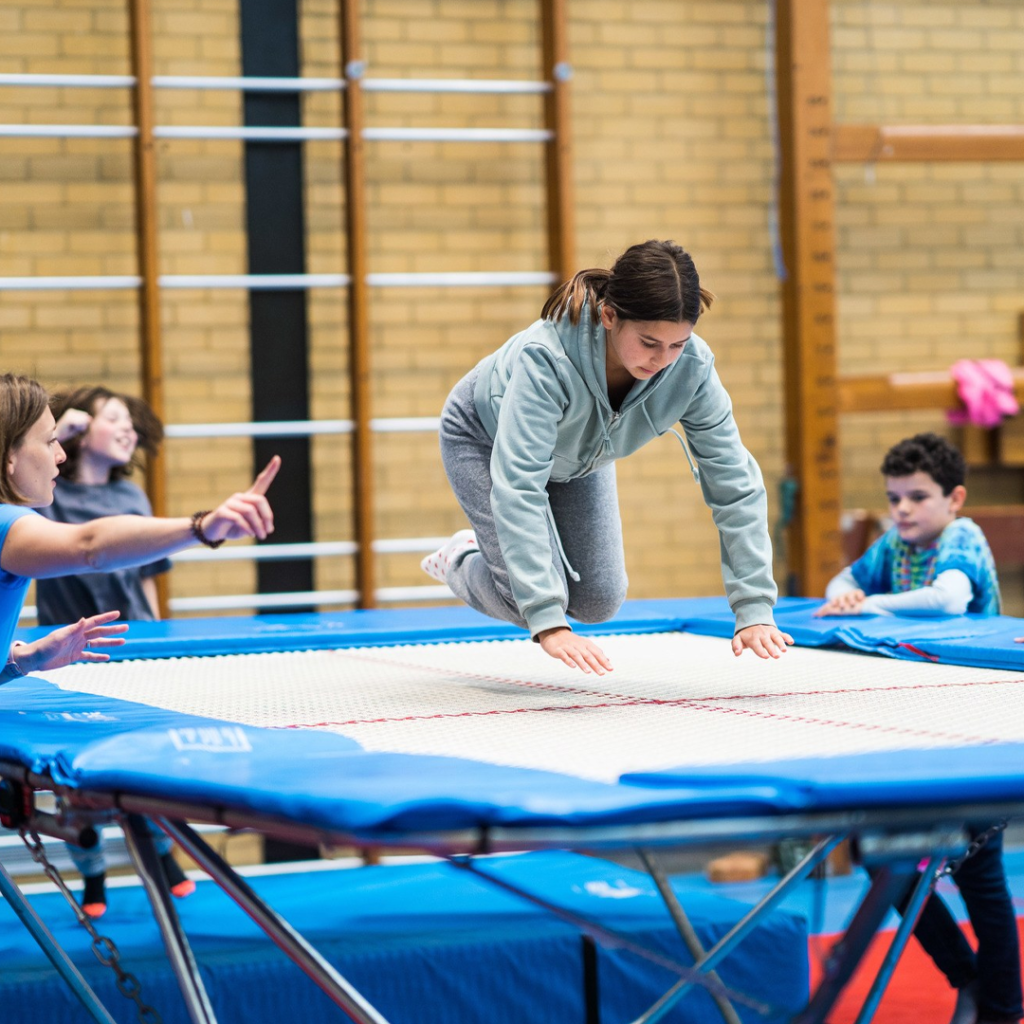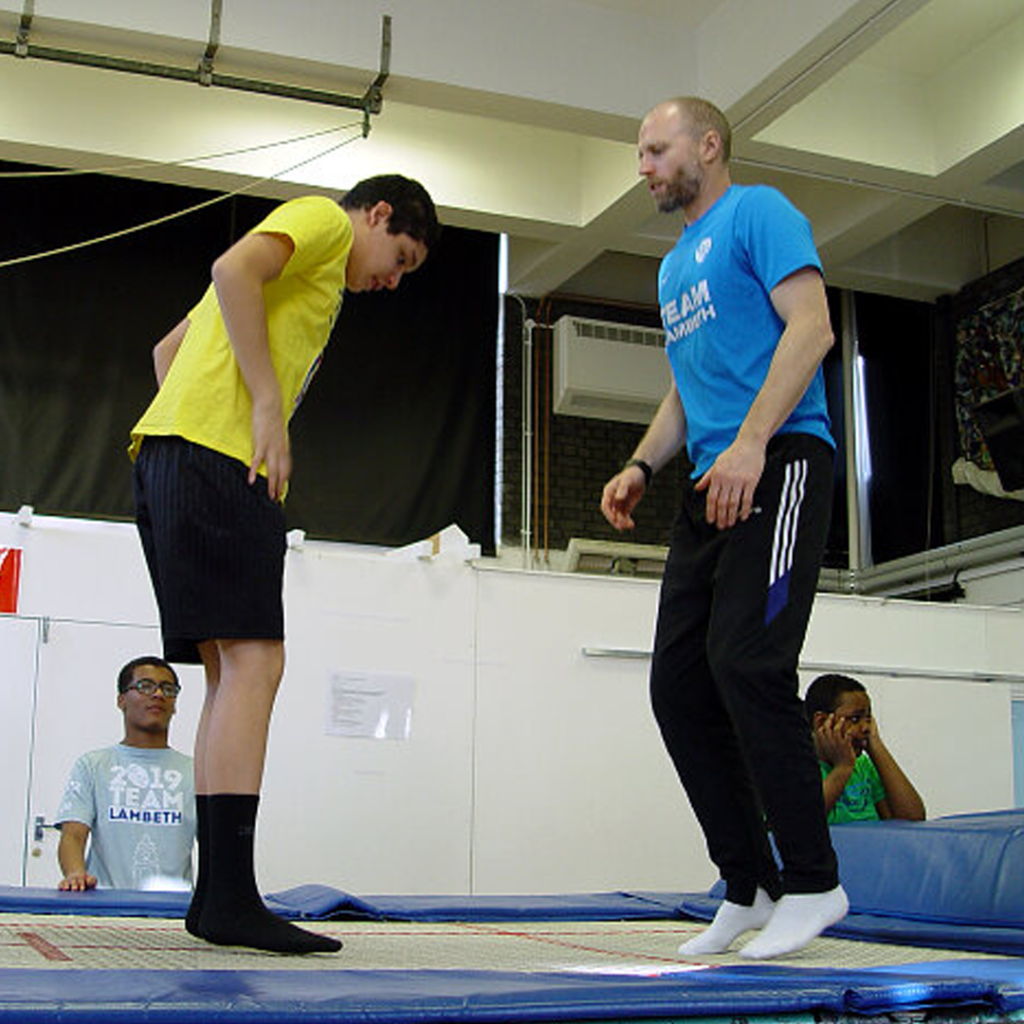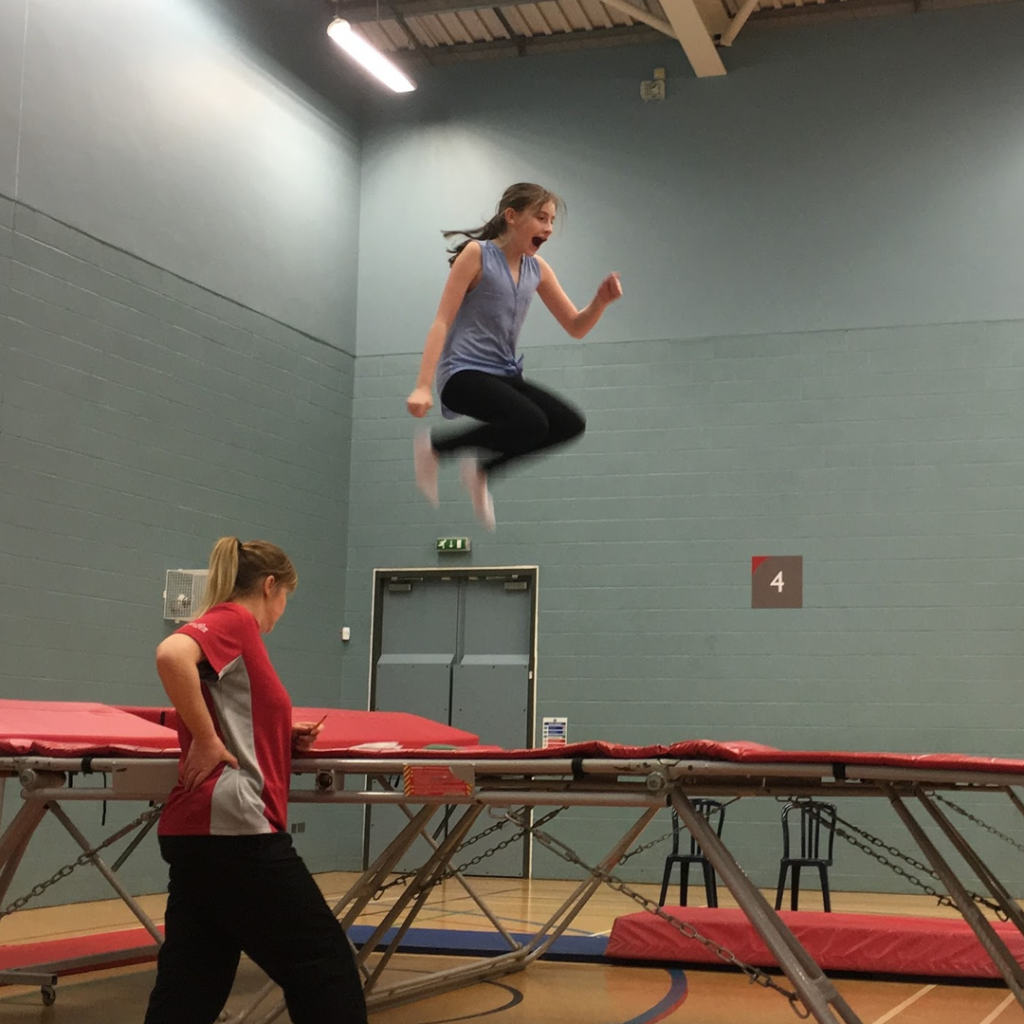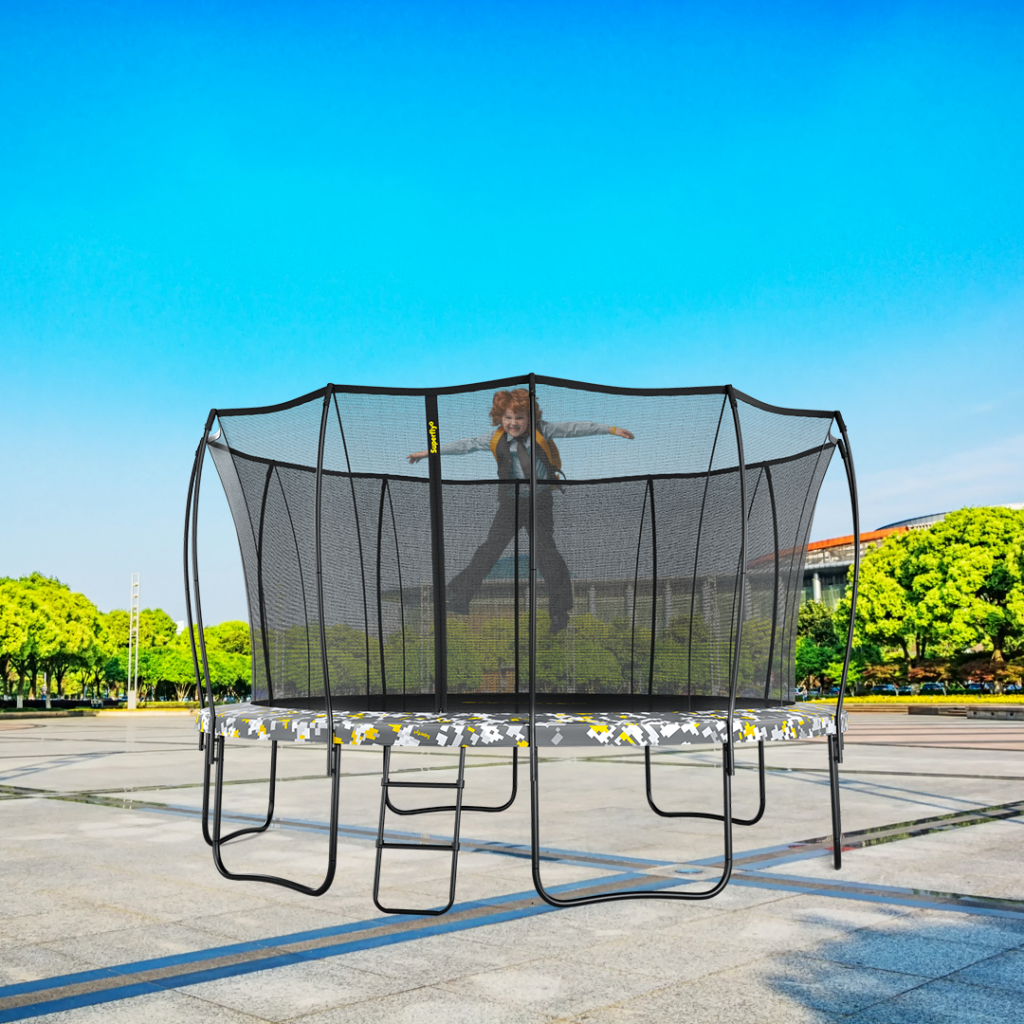
Schools are not just for learning; they also help children grow in other ways. It’s not only about books; schools care about children’s bodies and health too. They make sure children learn and also take care of their physical well-being.
School is the place where children takes education, but thats not the only thing, schools are responsible for. Physical aspects are also important to incorporate in children. School trampolines are becoming increasingly popular as educators recognise the benefits of physical activity for child development. Regular exercise at a young age promotes healthy growth and learning.
Trampolines, in particular, help build core strength and balance. As children jump, their abdominal and back muscles engage to stabilise their body. This strengthens their core and improves coordination. Strong core muscles and balance are essential for activities like sitting still in class or participating in sports.
In this blog, we will be discussing the benefits of having a school sports trampoline as well as the security check and steps you should follow.
Improved Motor Skills
Gross motor skills are the abilities that are required to control the body’s large muscles for walking, running and other activities. Trampolining helps develop these skills through repetitive jumping. children learn to control their bodies in the air and land properly on the trampoline mat. This helps strengthen muscles and improve skills like jumping, leaping and bounding.
For many children, trampolining can be an enjoyable form of exercise.
- 15-20 minutes of jumping a few times a week can help children meet the recommended 60 minutes of daily physical activity.
- This can assist with weight management and the development of healthy habits.
With so many benefits for physical health, development and wellbeing, trampolining should be essential to every child’s routine.
Social and Emotional Development

Group activities on trampolines encourage cooperation and communication between children.
Jumping together on trampolines helps build teamwork as the children work together to create games and activities. They have to communicate to set rules like only one person at a time, take turns, and ensure everyone is safe. These social interactions are essential for development and help children improve their social and emotional skills.
In addition to team building and cooperation, trampolining with groups of children also encourages the development of communication skills. To participate in group activities, children must talk to each other, explain rules and ideas, take feedback, and resolve conflicts. Assertive communication is essential for success in many areas of life, so opportunities to practise these skills at a young age are precious.
Cardiovascular Fitness for Endurance
Cardiovascular fitness means how well your heart and lungs can give your muscles the oxygen they need when you’re doing exercise. Trampolining helps improve cardiovascular fitness in children through:
- Increased heart rate. Bouncing on a trampoline causes an elevated heart rate, strengthening the heart over time. Studies show a single 10-minute bounce session can increase a child’s heart rate to 130-140 beats per minute.
- Improved endurance. Regular trampolining helps increase stamina and endurance in children by making their hearts more efficient at pumping oxygenated blood to the muscles. Over time, a child can bounce for longer without tiring.
Trampolining provides greater cardiovascular benefits for some children than other forms of exercise like running or biking. The low-impact, fun bouncing reduces joint stress while still providing an intense workout. This can encourage children to exercise for longer, gaining more cardiovascular benefits.
With childhood obesity and inactivity on the rise, trampolining offers an easy, engaging solution to help children develop life-long heart health and fitness habits. For children who find traditional sports challenging, a trampoline can motivate them to get active in a fun way. The thrill of learning new bounces and tricks makes exercise enjoyable rather than a chore.
Strength Building – Stronger Muscles and Bones
Trampolining helps build strength in children by developing core muscles and improving bone density.
- As children jump, their core muscles must work hard to stabilise their bodies. This helps strengthen muscles in the abdomen, back, and pelvis. Strong core muscles are essential for balance, posture, and physical performance.
- Trampolining also helps increase bone density in children. When children land on the trampoline mat, their bones experience impact and stress, stimulating bone growth. Studies show trampolining can improve bone mineral density, helping children build stronger, healthier bones. Strong bones are essential for growth, preventing conditions like osteoporosis later in life.
The cardiovascular, strength and balance benefits of trampolining help set children up for an active lifestyle and long-term health and wellness. What kid wouldn’t love an activity that feels like play but provides so many benefits? School trampoline is a simple solution with big rewards for children’s physical development and learning.
The Cognitive Benefits of Trampolining for Active Children
Regular physical activity like trampolining has been shown to boost focus and concentration in children. Studies show exercise increases blood flow to the brain, delivering more oxygen and nutrients to neurons. This helps strengthen the connections between brain cells, enhancing cognitive abilities.
children who exercise regularly tend to have better focus and attention spans. Trampolining, in particular, requires concentration to properly execute skills and stay balanced, which helps train the brain. Research indicates children who engage in physical play, like jumping on trampolines, have improved attention and decision-making skills.
Trampolining also releases dopamine, a neurotransmitter essential for motivation, reward, and focus. The thrill of mastering a new trick or bounce can light up the brain’s reward centres, reinforcing the benefits of exercise and making children want to be active. This leads to better concentration and discipline during less stimulating activities like homework or chores.
In summary, trampolining and other forms of exercise have significant cognitive benefits for children. By increasing blood flow to the brain, strengthening neural connections, and releasing motivational neurotransmitters, physical play enhances focus, attention span, and discipline in children. Schools that provide trampolines and encourage outdoor play are helping children reach their full cognitive potential.
Stress Buster for Children’s Mental Well-being

Bouncing on a trampoline can help reduce stress and anxiety in children.
Release of endorphins
Jumping on a trampoline releases endorphins in the brain, acting as natural mood and stress boosters. These endorphins can help combat stress and worry in children and make them feel good.
Positive impact on mental well-being
Trampolining also increases serotonin levels, which helps regulate mood and make people feel good. This boost in serotonin and endorphins leads to improved well-being and happiness in children, which helps offset the effects of stress and anxiety. The enjoyable experience of bouncing, spinning and trying fun jumps or tricks on a trampoline can lighten their mood and take their mind off of worries or stressful thoughts.
Regular trampolining can help children better cope with stressful situations in a fun way. It gives them an outlet to release pent-up energy and emotions, leading to improved focus and sleep. The psychological benefits of trampolining for stress reduction and mood enhancement should be noticed.
Boost in Confidence
Achieving skills and mastering new techniques on the trampoline gives children great accomplishment and confidence. As children learn and perfect more advanced skills, they feel genuine achievement in getting the trampoline.
- Start with primary bounces and progress to seat drops, tucks, pikes and twists. Each new trick achieved builds self-esteem.
- Encourage children as they advance to more complex skills. Give positive reinforcement through praise and rewards to motivate them to push themselves further.
- Spot children to ensure safety as they learn, giving them the confidence to try new skills. Your support and belief in their abilities inspire them to achieve more.
Success on the trampoline translates to success in other areas of life. The confidence gained through mastering skills and overcoming fears on the trampoline gives children the courage to take on new challenges off the trampoline. Trampolining helps build resilience and a growth mindset in children. With each small win, their self-confidence grows, empowering them to dream bigger.
Safety Measures in School Trampoline Use

Proper supervision and safety measures are critical when using trampolines at schools. Children should be guided in the appropriate way to avoid mishappenings. Trampoline should also be following the RoSPA Guidelines. Further, here are some of the steps you should follow-
Age-appropriate activities and One Child at a Time
Only one student on the trampoline at a time is allowed. For younger children, basic bouncing and simple jumps are best. Save more advanced skills for older, experienced students under proper coaching.
Maintenance and inspection
Inspect equipment regularly and adequately maintain the trampoline. Replace any worn-out pads, nets or springs immediately. Ensure the trampoline surface is clean and dry before each use.
These practical guidelines help create a fun learning environment where children can develop skills and confidence on the trampoline.
With the proper safety precautions and equipment, trampolines can be used securely in schools.
Conclusion
So there you have it. A school in ground trampoline can do wonders for children of all ages. Trampolining significantly benefits child development by improving balance and coordination and building strength and confidence. It’s an absolute blast for children and helps them lead active, healthy lifestyles from an early age. If you’re a parent, teacher or school administrator, investing in a trampoline for recess and PE classes is something you should seriously consider. The children will thank you for it, and you’ll be giving them a gift that keeps on giving for years to come.





